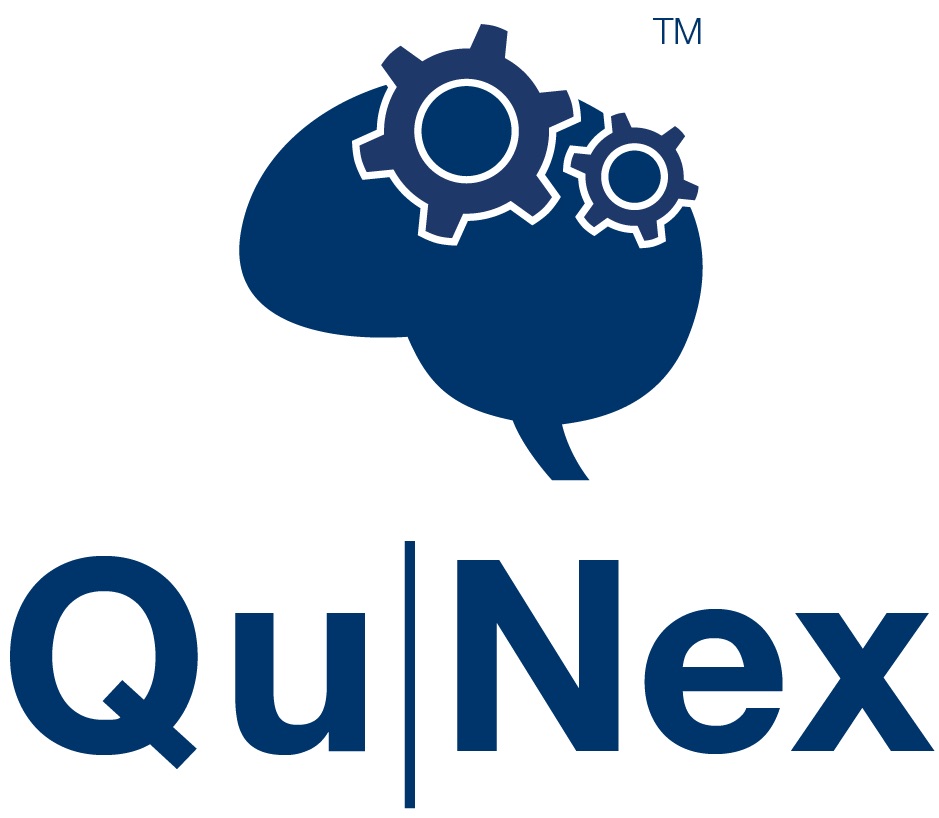Research
Scientific Goal
We work at the interface of computational modelling, MRI physics, and neuroscience. Broadly, our scientific goal is to achieve a better understanding of the structural and functional organisation of the brain at a systems level. We develop computational methodology and algorithmic/modelling frameworks for analysing neuroimaging data and specifically for mapping brain connections and microstructure using MRI (diffusion and functional MRI). Our aim is to provide principled platforms for probing the brain organisation to untangle its complexity in health and disease.
Scientific Contributions and Objectives
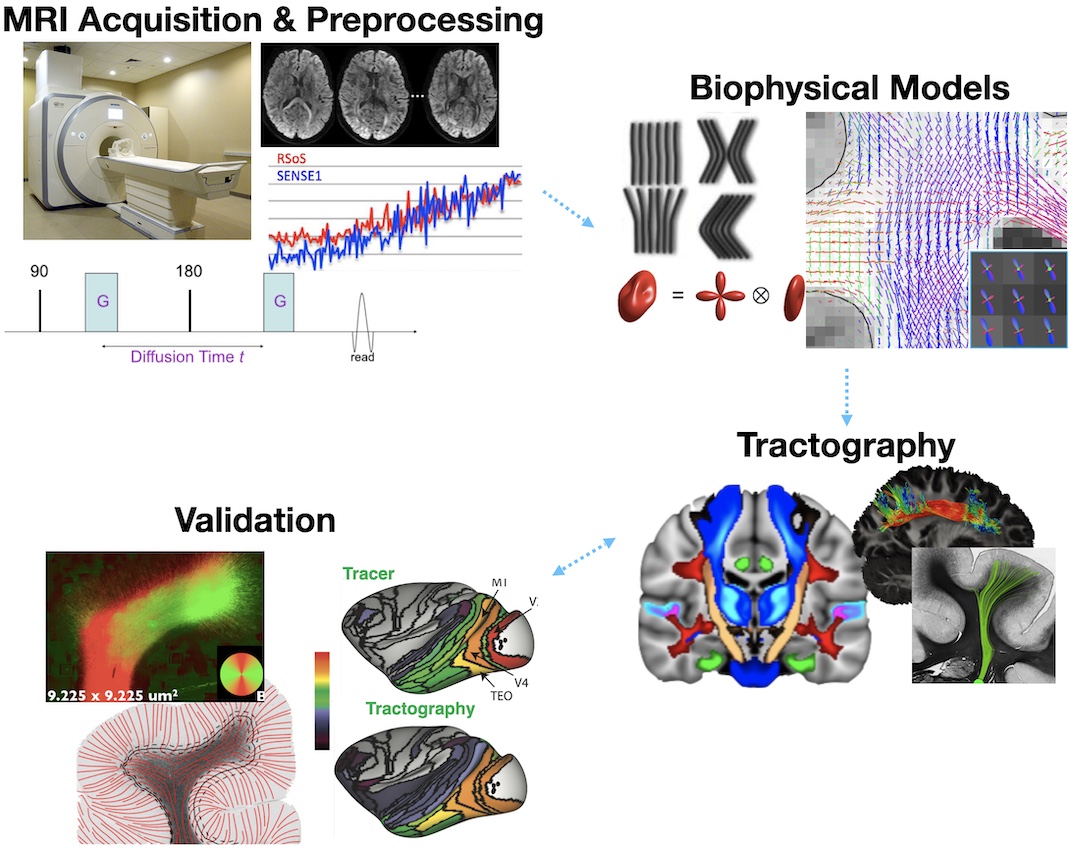
-
Development of modelling frameworks for mapping brain connections and microstructure
We devise novel computational frameworks for analysing brain images. Particularly, we have focused on the analysis of multi-dimensional diffusion MRI data, which uniquely allow inference of microstructural tissue properties, as well as of macroscopic connections, non-invasively and in-vivo. Due to the indirect nature of the measurements, advanced signal/image processing techniques and modeling approaches are needed to obtain reliable estimates of the quantities of interest. Such methodology has been developed through our contributions, which allow biophysical information to be extracted from diffusion MRI that otherwise would have only been accessible in humans via post-mortem approaches. -
Pushing the boundaries of in-vivo brain MRI acquisitions and high-throughput analysis
We have been heavily involved with the design and implementation of new technologies that aim to push the boundaries of in-vivo brain MRI acquisitions and analysis. For instance, we have been major contributors to the Human Connectome Project, which has contributed to changing the way neuroimaging data are acquired and processed. These developments have also set the paradigm for subsequent large-scale brain mapping projects in disease, development and aging.
We also have a track record of releasing open-source software, impacting research methodology worldwide. We have developed frameworks that allow masive parallelisation in data processing for high-thoughput analysis (e.g. using GP-GPUs). Finally, we have contributed to public data releases through a number of large collaborative projects, sharing publicly the wealth of collected data and contributing to Open Science.
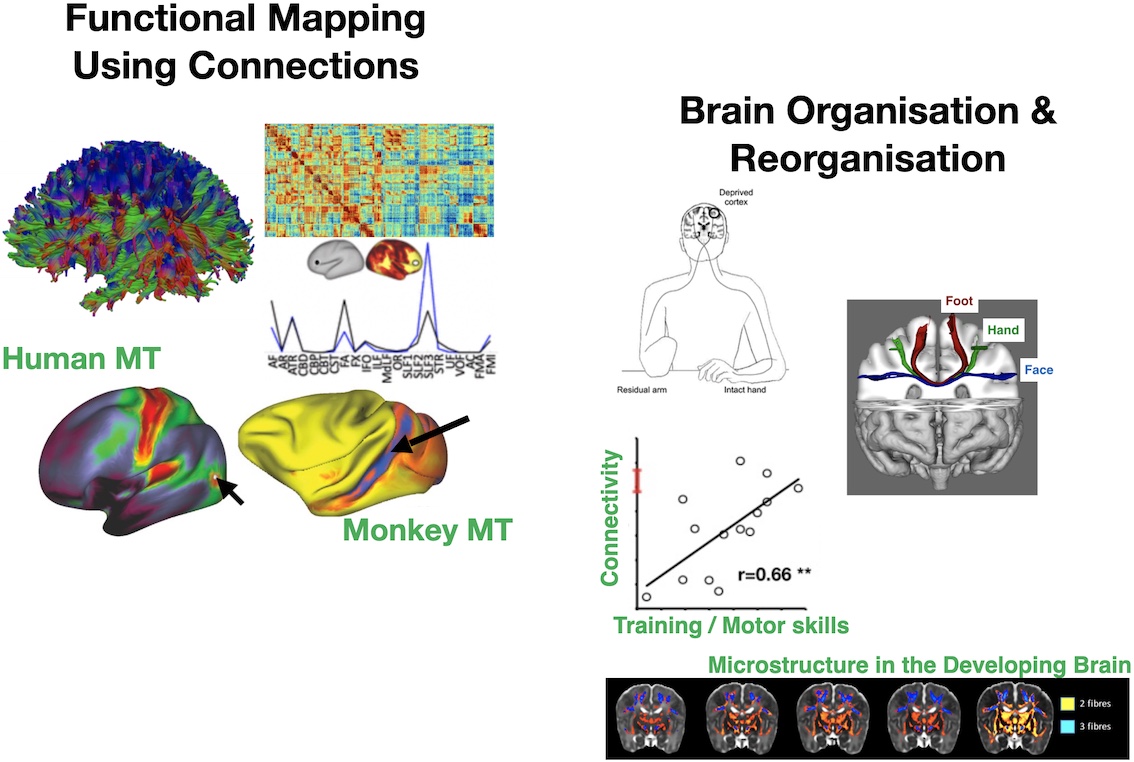
-
Personalised connectivity mapping and characterisation of individual variability
We develop platforms to enable principled subject-specific mapping of brain connections and organisation and identification of personalised patterns. As the brain connections constraint what the humam mind can and cannot compute, we aim to link such patterns with function and behaviour to establish fingerprints of individual brains. These allow us to establish correspondences and frames of reference for studying brain changes throughout the lifespan, even across species. They also permit mapping variability at the population level for establishing measures of what is a healthy brain network. The latter could subsequently provide insight and offer quantitative assessments of disruptions linked to mental health disorders. -
Studying brain organisation in basic and clinical neuroscience
Through collaborations with basic and clinical neuroscientists, we use brain connectivity mapping approaches to explore brain organisation and re-organisation (e.g. due to plasticity or non-invasive neuromodulation). We also work on extracting patterns of connectivity (even across species) that can be linked to the functional organisation of the brain. Such connectivity patterns have been used in collaboration with neuro-surgeons for pre-surgical planning and identification of efficacious targets for surgical interventions.
Large Collaborative Projects
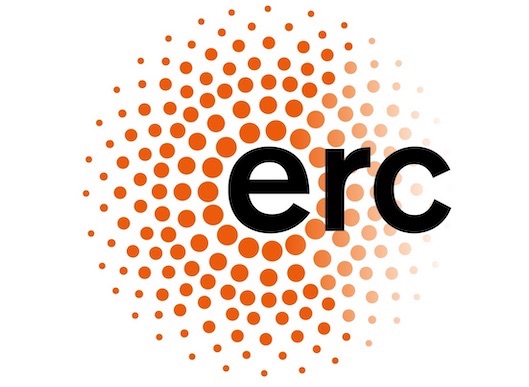
- We are leading the ERC-funded NeuroMetrology programme, which establishes measurement principles for brain connectivity estimates, including increased accuracy, precision mapping and establishing references.

- We are major partners in the NIH-funded Centre for Mesoscale Connectomics (CMC). This aims to push the boundaries for NHP and human MRI acquisitions at ultra-high fied (10.5T) and link MRI with meso/micro-scale connectivity measurements (chemical tracing and whole-brain microscopy).

- We are major contributors to the NIHR-funded Nottingham Biomedical Research Centre and the Magnetic Resonance and Precision Imaging theme, for bridging state-of-the-art imaging technologies with clinical research and translational applications.

- We have been major partners in the NIH-funded Human Connectome Project (HCP), contributing to both the HCP processing pipelines and the public data releases (1,200 young adult subjects with cutting-edge data quality and multiple neuroimaging modalities).
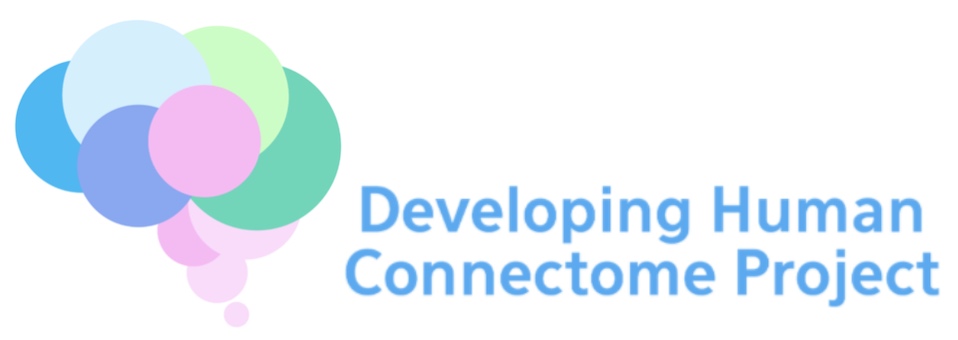
- We have been major partners in the ERC-funded developing Human Connectome Project (dHCP), leading the dHCP diffusion MRI processing pipelines development and contributing to the public data releases (500 neonates, 37-44 weeks post-conception age, with structural, functional and diffusion MRI acquired).

- Our tools have been used in the diffusion MRI processing for generation of imaging-derived phenotypes (IDPs) from the data of the population-level UK Biobank Imaging study, which scans 100,000 individuals with 6 neuroimaging modalities (T1w, T2w-FLAIR, SWI, dMRI, resting-state fMRI, task fMRI).
